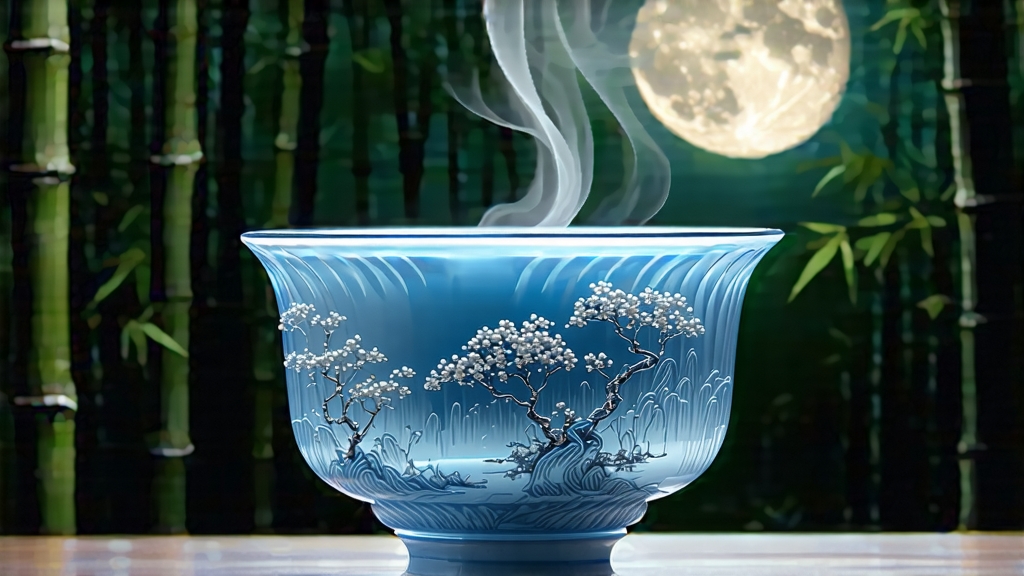
Among the six great families of Chinese tea, white tea is the least theatrical yet the most elusive; it is oxidised by nothing more than air, time, and the patience of its maker. Within this minimalist lineage, Bai Hao Yin Zhen—literally “White-Hair Silver Needle”—sits at the apex, the single-bud expression that connoisseurs call “the moonlight of tea.” To understand China’s tea imagination, one must first meet this quiet immortal.
History: from imperial elixir to global muse
The first verifiable record appears in the Song Dynasty treatise Da Guan Cha Lun (1107 CE), where emperor Huizong praises “white buds of the first spring” so precious that they were reserved for ancestral rites. Yet Silver Needle as a recognisable commodity emerged only in the 1790s, when tea merchants from Fuding loaded downy buds onto junks bound for Canton and, ultimately, European pharmacies that marketed them as “tea of longevity.” By 1891 a Fuding cake of Silver Needle won gold at the Melbourne International Exhibition; suddenly the West had a name for the flavour it had been tasting in the dark. In post-reform China the tea became state gift diplomacy—Premier Zhou Enlai served it to Richard Nixon in 1972—while today it headlines specialty menus from Brooklyn to Berlin, a pivot from court secrecy to cosmopolitan chic.
Terroir: two counties, one needle
Authentic Silver Needle is legally circumscribed to northern Fujian: Fuding and neighbouring Zhenghe. Fuding’s core lies around the villages of Taimu Mountain, a granite massif whose soils are slightly acidic and rich in potassium; cool maritime air drifts inland each night, lengthening the withering cycle and concentrating amino acids. Zhenghe sits higher and warmer, yielding sturdier buds with a duskier down and a deeper, almost orchid sweetness. Purists debate which county produces the “true” needle, but cup character is better read as vintage variation than hierarchy.
Cultivar: the mother trees
Two bush varieties are authorised. Fuding Da Bai (“Big White”) produces the archetypal plump bud—one centimetre long, ivory shaft, silvery semaphore of trichomes—harvested in a frantic three-week window after Qingming festival. Zhenghe Da Bai buds are slimmer, darker, and yield a liquor that ages into honeyed hay. A third cultivar, Fu’an Da Hao, is sometimes smuggled into cheaper grades; its buds are longer but less aromatic, a reminder that pedigree matters when nothing is hidden by roasting.
Plucking: the dawn discipline
Pickers begin at 5 a.m. while dew still sheathes the hillside; sunlight on the bud would redden the enzyme and flatten the fragrance. Only the unopened spear—no leaf, no stem, no second-growth “fish-leaf”—is snapped off with the nail, never pulled. Experienced hands gather barely 500 g per hour; 30 000 buds equal one finished kilogram, the reason Silver Needle costs more than silver itself.
Craft: the art of doing almost nothing
White tea’s motto is sheng shai—“born to be sun-dried.” Once baskets reach the farmhouse, buds are spread one layer thick on water-reed trays and left under a high translucent roof. For 36 to 48 hours they breathe, losing moisture in an undulating rhythm orchestrated by mountain breeze and March sun. Around midnight the ambient humidity spikes; artisans shuffle trays to the lee side, ensuring even withering without enzymatic bruise. When the bud’s moisture drops to 10 %, a final low-temperature bake (40 °C) locks in the signature “milk and pine” aroma. No rolling, no firing, no shaping—just disciplined inaction.
Ageing: white turns to black
Unlike green tea, Silver Needle improves under careful oxidation. Stored in clay jars at 25 °C and 60 % relative humidity, the buds darken from moon-white to antique gold over five years, developing notes of dried apricot, sandalwood, and camphor. A 2018 study at Fujian Agriculture University identified increasing levels of theaflavins and gallic acid, compounds linked to circulatory health. Thus a new category—“aged white”—has entered investment portfolios, with 1997 cakes fetching USD 3000 per 100 g at Guangzhou auction.
Grading: how to read the down